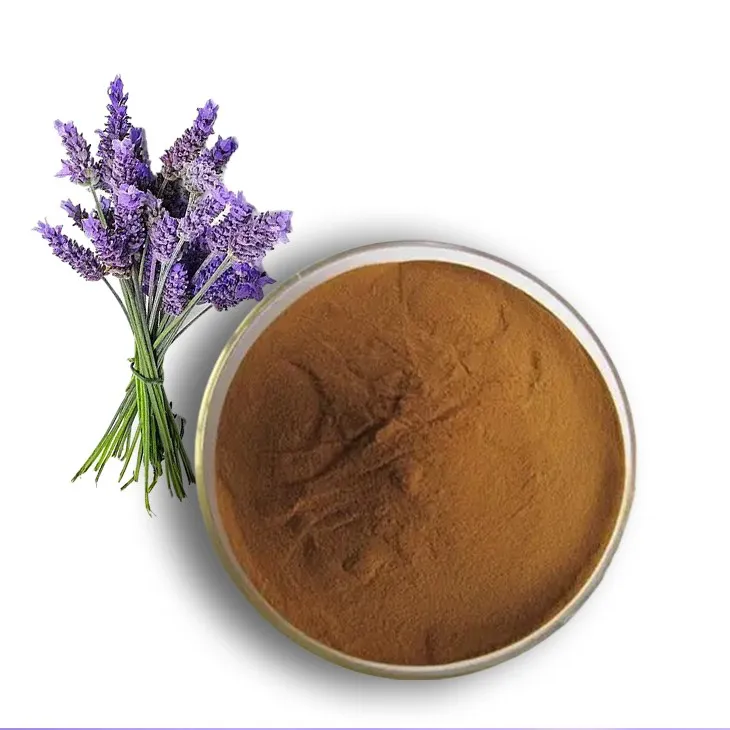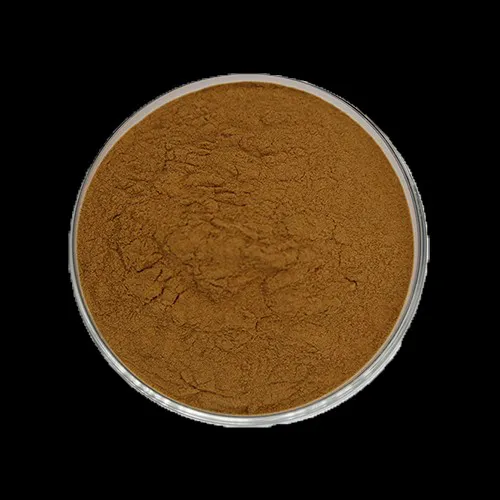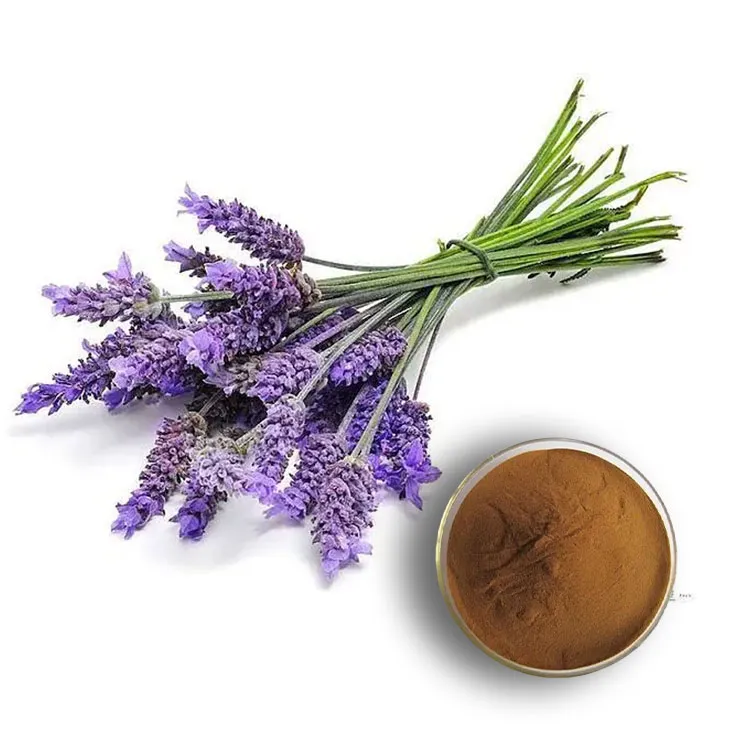- 0086-571-85302990
- sales@greenskybio.com
The Best Lavender Extract in 2024.
2024-11-30

Introduction
As we step into 2024, the world of Lavender Extract has entered a new and exciting phase. The demand for high - quality Lavender Extract has been on the rise, driven by various industries such as cosmetics, aromatherapy, and food. However, determining the best Lavender Extract is not a straightforward task. It involves a comprehensive evaluation of multiple factors, from the origin and quality of the lavender plants to the extraction methods employed.

The Importance of Lavender Plant Quality
Origin of the Lavender Plants
The geographical origin of lavender plants plays a crucial role in the quality of the resulting extract. Different regions around the world are known for their unique lavender cultivation. For instance, the lavender fields in Provence, France, are world - famous. The climate, soil composition, and altitude in Provence provide ideal conditions for lavender growth. The plants here are often exposed to the right amount of sunlight and rainfall, which contributes to their rich aroma and high content of active compounds. Plants grown in such favorable environments tend to produce extracts with superior quality.
Lavender Species
There are several species of lavender, and each has its own characteristics. The two most common species used for extraction are Lavandula angustifolia and Lavandula latifolia. Lavandula angustifolia, also known as English lavender, is highly prized for its sweet, floral scent and relatively high content of linalool and linalyl acetate, which are important compounds in lavender extract. On the other hand, Lavandula latifolia, or Spike lavender, has a more camphor - like aroma and different chemical composition. When choosing the best lavender extract, it is essential to consider which species is used, depending on the desired application.
Cultivation Practices
Organic cultivation methods are becoming increasingly popular in the lavender industry. Organic - grown lavender is free from synthetic pesticides and fertilizers, which not only benefits the environment but also results in a purer extract. Sustainable cultivation practices, such as proper irrigation and crop rotation, ensure the long - term health of the lavender plants. For example, farmers who practice crop rotation can prevent soil depletion and pest infestation, leading to healthier plants and better - quality extracts. Well - cared - for lavender plants are more likely to yield extracts with consistent quality.

Sustainable Extraction Techniques
Steam Distillation
Steam distillation is one of the most traditional and widely used methods for extracting lavender essential oil, which is a key component of lavender extract. In this process, steam is passed through the lavender flowers, causing the essential oil to vaporize. The vapor is then condensed back into a liquid, separating the essential oil from the water. This method is considered sustainable as it does not require the use of harmful solvents. It also helps to preserve the natural properties of the lavender, resulting in an extract with a pure and authentic aroma.
Supercritical CO₂ Extraction
Supercritical CO₂ extraction is a more modern technique. In this method, carbon dioxide is used in its supercritical state, which has properties between a gas and a liquid. It can penetrate the plant material more effectively than traditional solvents, extracting a wider range of compounds. The advantage of this method is that it is a clean and environmentally friendly process, as carbon dioxide is a non - toxic and non - flammable gas. Moreover, it can produce a more complete extract, containing both volatile and non - volatile compounds, which may enhance the therapeutic properties of the lavender extract.
Solvent - Based Extraction
Solvent - based extraction, although less commonly used in high - quality lavender extract production, still has its place. Ethanol or other food - grade solvents can be used to extract lavender. However, it is crucial to ensure that all solvent residues are removed from the final product. This method can be more effective in extracting certain compounds that are less soluble in steam or CO₂. Nevertheless, strict quality control is required to avoid any potential health risks associated with solvent residues.

Potency of the Resulting Product
Chemical Composition
The chemical composition of lavender extract is what determines its potency. As mentioned earlier, linalool and linalyl acetate are two important components in Lavandula angustifolia extract. These compounds are responsible for the characteristic lavender scent and also possess various therapeutic properties, such as relaxation and anti - inflammatory effects. Other compounds like terpenes and flavonoids also contribute to the overall quality and potency of the extract. High - quality lavender extracts should have a well - balanced chemical composition, with optimal levels of these active compounds.
Aromatherapy Applications
In aromatherapy, the potency of lavender extract is measured by its ability to induce relaxation, reduce stress, and improve sleep quality. A potent lavender extract should have a strong and pleasant aroma that can effectively create a calming atmosphere. When used in diffusers or added to bath products, it should be able to quickly release its aroma and provide the desired therapeutic effects. Studies have shown that lavender extracts with a higher concentration of active compounds are more effective in aromatherapy applications.
Cosmetic and Skincare Applications
Lavender extract is widely used in cosmetics and skincare products for its soothing and anti - inflammatory properties. In these applications, the potency of the extract is determined by its ability to penetrate the skin and interact with skin cells. A high - quality lavender extract should be able to reduce skin irritation, improve skin texture, and have antioxidant effects. Extracts with a higher content of flavonoids and other skin - beneficial compounds are more potent in cosmetic applications.
Leading Lavender Extracts in 2024
Brand A
Brand A's lavender extract stands out for several reasons. Their lavender plants are sourced from the idyllic lavender fields in Provence. The company uses steam distillation to extract the essential oil, ensuring a pure and natural product. The resulting extract has a high concentration of linalool and linalyl acetate, making it ideal for both aromatherapy and cosmetic applications. In addition, Brand A is committed to sustainable farming practices, which further enhances the quality of their product. Customers have reported excellent results in terms of relaxation and skin improvement when using their lavender extract.
Brand B
Brand B takes a different approach. They use a combination of supercritical CO₂ extraction and steam distillation to create a more comprehensive lavender extract. Their lavender is organically grown in the mountains of Spain, where the unique climate and soil produce lavender with a distinct aroma. The extract contains a wide range of compounds, including not only the traditional linalool and linalyl acetate but also other terpenes and flavonoids. This makes it highly potent in both aromatherapy and skincare. Brand B has received positive reviews for its ability to relieve stress and improve skin elasticity.
Brand C
Brand C focuses on solvent - based extraction, but with strict quality control to ensure the removal of all solvent residues. Their lavender is carefully selected from different regions to create a blend with a unique chemical composition. This extract is known for its strong anti - inflammatory properties, especially in skincare products. The company also invests in research to optimize the extraction process and enhance the potency of their product. Many consumers have found Brand C's lavender extract to be very effective in treating skin inflammations.
Conclusion
In conclusion, the search for the best lavender extract in 2024 requires a detailed understanding of various factors. The quality of the lavender plants, the extraction techniques used, and the potency of the resulting product all play important roles. Brands that focus on these aspects, such as Brand A, Brand B, and Brand C, are leading the way in the lavender extract market. Whether for aromatherapy, cosmetics, or other applications, consumers can make more informed choices by considering these factors when selecting a lavender extract.
FAQ:
What are the main factors determining the quality of lavender extract?
The main factors include the quality of the lavender plants themselves. High - quality plants are typically those grown in ideal conditions such as proper soil, sunlight, and water supply. Sustainable extraction techniques also play a crucial role. If the extraction process is too harsh or uses harmful chemicals, it can affect the final product. Additionally, the resulting product's potency, which refers to the concentration of the active compounds in the extract, is an important factor.
How can one identify sustainable extraction techniques for lavender extract?
One can look for certifications such as organic or sustainable farming certifications. Organic extraction techniques often avoid the use of synthetic pesticides and fertilizers during the growth of lavender plants. Also, methods that use minimal energy and resources during the extraction process are more sustainable. For example, cold - press extraction is often considered more sustainable compared to some chemical - based extraction methods as it doesn't require high - energy heating processes.
What makes a lavender extract 'the best' in 2024?
In 2024, a 'best' lavender extract would be one that comes from high - quality lavender plants, is extracted using sustainable methods, and has a high potency. It should also be pure, without a lot of fillers or additives. Additionally, it may have been tested for safety and efficacy, and perhaps have positive reviews from consumers or industry experts.
Are there any new trends in lavender extract production in 2024?
There may be a trend towards more precise extraction techniques to increase the potency of the extract while maintaining its natural properties. There could also be a growing focus on the use of local lavender varieties for unique flavor and aroma profiles. Another trend might be in the packaging, such as more eco - friendly packaging to align with the overall sustainable trend in the industry.
How does the quality of lavender plants affect the lavender extract?
The quality of lavender plants directly impacts the lavender extract. Well - grown plants with proper nutrients are likely to have a higher concentration of the desired compounds. For example, lavender plants that receive adequate sunlight are more likely to produce more essential oils. If the plants are diseased or stressed, they may not produce as high - quality an extract. The species of lavender also matters, as different species have different chemical compositions, which will be reflected in the extract.
Related literature
- Advances in Lavender Extract Quality Assessment"
- "Sustainable Lavender Extraction: A Review"
- "The Potency of Lavender Extracts: A Comparative Study"
- ▶ Hesperidin
- ▶ citrus bioflavonoids
- ▶ plant extract
- ▶ lycopene
- ▶ Diosmin
- ▶ Grape seed extract
- ▶ Sea buckthorn Juice Powder
- ▶ Beetroot powder
- ▶ Hops Extract
- ▶ Artichoke Extract
- ▶ Reishi mushroom extract
- ▶ Astaxanthin
- ▶ Green Tea Extract
- ▶ Curcumin Extract
- ▶ Horse Chestnut Extract
- ▶ Other Problems
- ▶ Boswellia Serrata Extract
- ▶ Resveratrol Extract
- ▶ Marigold Extract
- ▶ Grape Leaf Extract
- ▶ blog3
- ▶ blog4
-
The Most Worth - Buying Pure Lemon Extract.
2024-11-30
-
100% Pure Organic Dandelion Leaf Extract.
2024-11-30
-
Chinese Bitter Melon Extract Suppliers.
2024-11-30
-
Red Vine Extract
2024-11-30
-
Fig Extract
2024-11-30
-
Eucommia Ulmoides Extract
2024-11-30
-
Reishi mushroom extract
2024-11-30
-
Motherwort Extract
2024-11-30
-
Artichoke Extract
2024-11-30
-
Cocoa Extract
2024-11-30
-
Ivy Extract
2024-11-30
-
Withania Somnifera Extract
2024-11-30
-
Bayberry Extract
2024-11-30





















